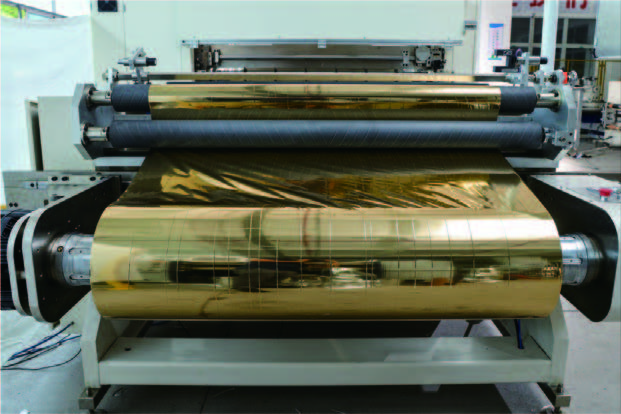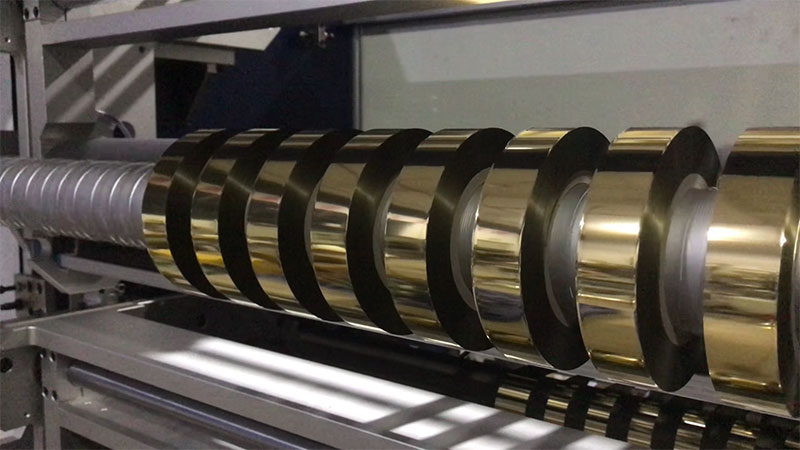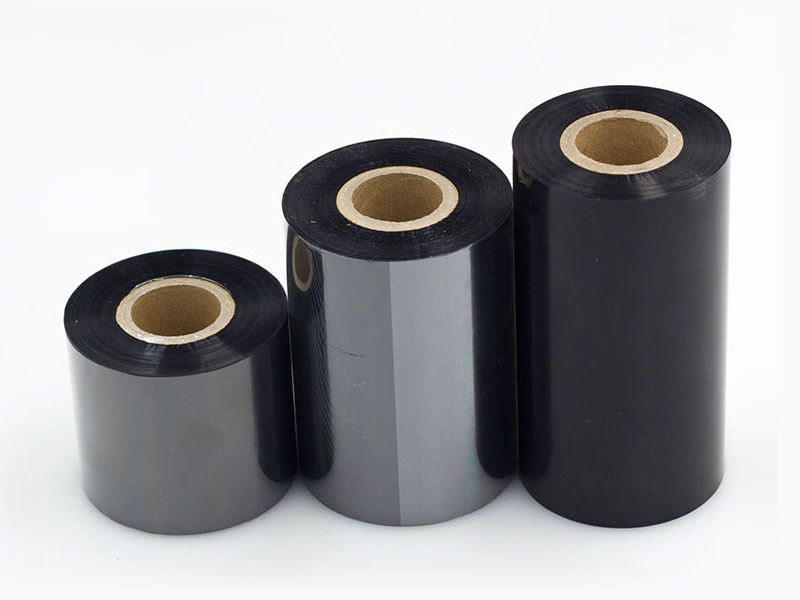Behind the dazzling array of industrial products, there are many "behind-the-scenes heroes", and the slitting machine is one of them. From the lithium battery separator in your mobile phone, to the express carton you receive when shopping, to the smooth and flat plastic wrap in the supermarket, almost all the materials that are "rolled" are inseparable from the precision processing of the slitting machine.
If your impression of slitting machines is still stuck in "turning large coils into small rolls", then this article will take you through the appearance and directly hit the core logic of industrial coil slitting.

1. Core logic: Slitting is not a simple "cutting", but a "value reshaping"
The fundamental task of the slitting machine is to slitting the large width and large diameter master roll into multiple narrow width and small diameter sub-rolls according to the needs of downstream processes or end customers.
But the core logic behind this is much more than that, it is essentially a process of "form transformation" and "value enhancement":
1. Physical form transformation: wide → narrow; Large→ small; Industrial Standards → Custom-made products.
2. Value Reshaping and Enhancement:
◦ Meet the application: the master roll cannot be used directly, and can only be adapted to various machines (such as printing machines, bag making machines, battery winding machines) after slitting.
◦ Improve quality: By slitting, the original defective parts of the master roll (such as burrs and impurities) can be removed, and the rewinding can be neatly rewound to ensure the quality of the sub-roll.
◦ Cost reduction: The cost of purchasing large master rolls is lower, and after slitting, they are sold on demand, reducing inventory pressure and waste for customers.
In short, slitting machines are the "key bridge" between raw material production and end-consumption applications.

2. Chef and cattle: the three core systems of the slitting machine
To understand the slitting machine, you need to think of it as a sophisticated "operating room" with three main systems working together:
1. Unwinding system (preparing the "patient")
This is the starting point for slitting and is responsible for releasing the master roll with smooth and constant tension. The core lies in "tension control". If the tension is too large, the material will be stretched or even broken; If the tension is too small, the roll will loosen and wrinkle, like a crumpled paper towel. A good unwinding system ensures that the material is always in the ideal state of "taut but not deformed" when entering the cutting area.
2. Slitting system (performing "surgery")
This is the "heart" of the slitting machine, which determines the precision and quality of the cut. There are two main types of "scalpels":
• Straight knife slitting (cutting): like cutting something with a hoe, using the shear force of the upper and lower knives. It is suitable for paper, cardboard, non-woven fabrics and other hard materials with a certain degree of stiffness. The advantage is fast speed and flat cuts.
• Circular knife slitting (scribing): Like cutting glass with a utility knife, using a sharp circular blade to apply downward pressure to "cut" the material. It is suitable for soft, thin materials such as films, tapes, copper foils, and aluminum foils. The advantage is that the incision is smooth and burr-free, and the damage to the material is small.
Which method to choose depends entirely on the physical properties and quality requirements of the material.
3. Winding system (bandaging "discharge")
This is the end point of slitting, which is responsible for rewinding the multiple strips of material after slitting into neat, compact sub-rolls. The core lies in "winding control". Modern slitting machines usually use center coiling or surface coiling, or a combination of both. The key is to ensure that the roll diameter of each sub-roll is consistent, the elasticity is uniform, and the edges are neat (commonly known as "cabbage heart is not rotten"), so that it can be used smoothly in subsequent rolling.

3. The soul: the control core of the slitting process
If the mechanical structure is the "body" of the slitting machine, then the control system is its "brain and soul". Its essence can be summed up in three words:
• Tension: A lifeline throughout to ensure smooth material transfer.
• Pressure: The force applied by the slitting knife affects the quality of the cut and the life of the tool.
• Speed: The rhythm of the whole machine's operation, linked with tension and pressure, determines the production efficiency.
A precise dynamic balance is required between the three. A good slitter operator, like an old driver, can adjust the "throttle, brake, and steering wheel" (tension, pressure, speed) at any time according to different "road conditions" (materials) to ensure a smooth and efficient journey.
4. Application scenarios: slitting machines are everywhere
The slitting machine is used in an extremely wide range of applications and covers almost all coil industries:
• Paper and printing packaging: Cutting giant paper and cardboard into the specifications required by printing machines and carton factories.
• Plastic film: The production of plastic wrap, packaging bags, agricultural mulch film, etc., requires cutting wide plastic master rolls.
• Lithium battery new energy: This is one of the most demanding areas for slitting. Extremely thin copper foil, aluminum foil and separator need to be slitted with ultra-high-precision slitting machines in the 10,000-level dust-free workshop, and any burrs and dust may cause a short circuit in the battery.
• Non-woven fabrics: The raw materials for masks, protective clothing, and wet wipes have been precision processed by slitting machines.
• Metal foil: such as copper foil and aluminum foil, used in electronic circuits, food packaging, etc.
summary
Back to the original question: What is the core logic of the slitting machine?
It is a set of standardized process flow that converts industrial master coils into physical form through the perfect combination of precision machinery (unwinding, slitting, winding) and intelligent control (tension, pressure, speed), so as to maximize its application value.
The next time you easily tear off a piece of plastic wrap or unpack a delivery box, you might think that behind it is a precision slitting machine, playing an industrial symphony of tension, precision and efficiency. Understanding this core logic, you will understand this indispensable key link in modern manufacturing.
 Key points of long-term reliability evaluation of hot stamping foil slitting machine: How to protect investment safety on the blade?
Key points of long-term reliability evaluation of hot stamping foil slitting machine: How to protect investment safety on the blade? Real user feedback: Reliability challenges and countermeasures in the production of hot stamping foil slitting machines
Real user feedback: Reliability challenges and countermeasures in the production of hot stamping foil slitting machines Simplifying the complex: when the hot stamping foil slitting machine learns to "think"
Simplifying the complex: when the hot stamping foil slitting machine learns to "think" Long-term reliability maintenance guide for ribbon slitting machines
Long-term reliability maintenance guide for ribbon slitting machines One-Click Operation: How the Convenience of Ribbon Slitting Machines Reshapes Workflows
One-Click Operation: How the Convenience of Ribbon Slitting Machines Reshapes Workflows